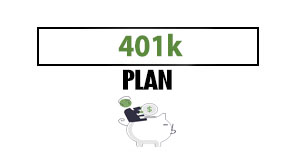It’s easy to feel all warm and fuzzy when being nostalgic about pensions. After all, who wouldn’t want a guaranteed income stream for life?
Unfortunately, more organizations are shifting towards defined-contribution plans like 401(k)s. Additionally, they come with risks. In particular, you may be left empty-handed or with a reduced payout if your employer closes or has inadequate funds.
By all means, though. If you are offered a pension, go ahead and snag it. But, also have additional retirement savings options to reduce any potential risk while also growing your wealth.
Most importantly, work with a financial advisor. They can help you develop a personalized retirement plan so that you can enjoy your retirement. And an advisor understands tax implications, inflation, and goals and can also advise on how to optimize your contributions and avoid costly mistakes.
Pension Retirement Tips Conclusion
Planning for your financial future is vital. Once you’ve put in your decades at the workplace, you want to be able to relax, hang up your keyboard, and enjoy retirement. You want to be sure that you have the funds you need to travel, visit family, and enjoy your life. That means doing your planning now.
If you’re employed, planning now means understanding whether you’ll receive a pension or are paying into a 401(k) plan — and the differences between the two.
Planning your retirement means knowing how much your pension is worth now and how much the future value of your retirement fund will be when you’re ready to retire. You need to know how to calculate the value of your pension.
You should also understand the connection between your pension and your job. The fact that employers make payments into 401(k)s and into pensions can make quitting a costly decision. You should know what will happen to your retirement fund if you decide to move. You might find that it’s worth staying around for a little longer than you planned.
The self-employed will have to negotiate retirement planning without the help of a personnel department. But both employees and employers will need to understand the tax benefits of pension contributions.
You should also know what will happen to your pension in the event of your death. While the law will protect some beneficiaries, you should make sure that the money you’ve saved for your retirement will go exactly to the people you want.
In short, retirement planning is both complex and important.
We’ve tried to lay out the scope of the information you need to know here. It is worth talking to a pension or financial advisor, though, who can guide you to the best plan for you.
Pension Glossary Index
Finally, to help you get a deeper understanding of pensions, here is a list of the most common pension terms. The Pension Glossary Index is by no means an exhaustive list. But, hopefully, it can help you build a foundation in improving your financial literacy.
Annuity
Recurring payments of income (usually monthly) made over a specific period of time. Often, these are recurring payments for life. The purpose of an annuity is to provide a steady stream of income during retirement.
Beneficiary
The person that you, the pension plan participant, selects to receive pension benefits upon your death.
Covered Plan
A defined benefit pension plan that has been insured by the Pension Benefit Guaranty Corporation.
Defined-Benefit Plan
A traditional pension plan that has been insured by the government so that it will pay a specified monthly benefit at retirement. It’s usually based on your age at retirement, rate of pay, and the years you worked for your employer.
Note that the employer’s pension administrator has full control of these investments and bears all the risks.
Defined Contribution plan
A defined contribution is another benefit program offered by employers. It provides an individual account for each participant. Contributions are made by the employer, the employee, or both and include 401(k) plans or employee stock ownership plans (ESOPs).
Members have control of these plans, but they are not insured by entities like the PBGC.
Early Retirement Benefit
A pension benefit that begins before the plan’s normal retirement date, which is usually 65. The downside with this benefit is that monthly payments are reduced.
Funded plans
Plans are usually fully funded, underfunded or unfunded. A fully funded plan means that it has sufficient assets to pay both current and future benefits.
Frozen Plan
If a sponsor “freezes an ongoing pension plan that means that some or all of the benefits have ceased. If a plan has been partially frozen, participants are based on factors like job classification, location, or years of service.
Guaranteed Benefit
“The amount of a participant’s pension benefit that PBGC guarantees based on ERISA’s legal limits,” explains the PBGC itself. “The benefits that PBGC may guarantee include pension benefits payable at normal retirement age, certain early retirement benefits and disability benefits; and annuity benefits for survivors of participants.”
The guarantees for plans will differ depending on if they are single-employer plans or multiemployer plans.
- Single-Employer Plan. “PBGC’s single-employer plan guarantee applies only to benefits earned on or before the plan termination date or the bankruptcy filing date, as applicable.” It’s also “subject to several legal limits, including the maximum guaranteed benefit, the accrued-at-normal limit, and the phase-in limit.”
- Multiemployer Plans. “PBGC’s multiemployer plan guarantee applies only to benefits earned before the plan is terminated.” Similar to single-employer plans, this plan is “subject to several legal limits, including the multiemployer guarantee, the phase-in limit, and a limit that is similar to the accrued-at-normal limit.”
Joint and Survivor Benefits
A pension benefit that permits a surviving spouse to receive a benefit if you, the pension participant, passes away. In most cases, the payment is half the participant’s benefit.
Lump-Sum Payment
Unlike an annuity, this is when payment of an entire benefit is made at one time.
Multiple Employer Plan
See Single-Employer Plan.
Nonguaranteed Benefit
A pension benefit that is not guaranteed by PBGC. The PBGC does not ensure 401(k) plans, IRAs, profit-sharing plans (ESOPs), money purchase plans, thrift savings plans, federal, state, and local/municipal government pensions.
Offset Plan
A type of pension plan where a participant’s benefit is reduced based on the plan’s terms. Typically, this is determined by the person’s Social Security benefits, benefits from another plan, or other amounts.
Portability
The ability to take a vested retirement benefit from one company and transfer somewhere else. This is usually to an individual retirement account (IRA) or a retirement plan at another company.
Qualified Plan
Any retirement plan, including your pension that meets the requirements of the Internal Revenue Code. In return, it will receive tax-favored treatment.
Required Beginning Date
The date when a qualified retirement plan is required to begin distributing a participant’s plan benefits. According to the PBGC, “the required beginning date is April 1 of the calendar year following the later of:
- The calendar year in which the employee attains age 72 (age 70½ for a participant who attained age 70½ before January 1, 2020), and
- The calendar year in which the participant terminates employment.
Retiree
The pension plan participant who has begun collecting pension plan benefits. In general, this is at age 65.
Single-Employer Plan
A pension plan that has been sponsored by one company. An exception would be a group of companies under common ownership that may or may not be collectively bargained.
A multiple employer plan is another type of single-employer plan. It’s maintained, however, by two or more unrelated companies. It also doesn’t meet the requirements of a multiemployer plan, such as a labor union.
Trust
A fund that has been established to hold and invest the assets of a pension plan.
Under Funded Plan and Un-Funded Plan
A pension plan that does not have enough assets to pay all the benefits and Unfunded Benefit Liabilities. Or the number of pension benefits promised that had exceeded a plan’s assets.
Vesting
The date when you can begin to receive the employer contributions that you earned. These include an employee stock option plan, deferred compensation plan, 401(k), annuity, or pension plan.
Year of Service
Generally, the 12-month period of service that a plan credits to an employee to determine benefit accruals, eligibility, and/or vesting.
- What is a pension plan?
- How does a Pension Plan Work?
- How a pension works
- The Move to Defined-Contributions
- Annuity
- Are pensions taxable?
- The Difference Between a Pension and a 401(k)
- The History of the Pension Plan
- The Link Between Your Pension and Your Job
- How to Find Old 401(k) and Pension Accounts
- Vesting Your Pension Funds
- It’s SEP to You
- Do You Really Need a Pension?
- How Much Should You Contribute to Your Pension Plan?
- How Much are You Allowed to Contribute a Pension Plan?
- Where’s My Money?
- Calculating the Value of Your Retirement Fund
- Common Causes of Errors in Pension Calculation
- Can I Tap My Pension Plan Early?
- Monthly Annuity or Lump Sum?
- Are There Any Risks Involved With Pensions?
- What Happens With My Pension When I Retire?
- What Happens to Your Pension if You Die?
- Can You Have a Pension and 401(k) and IRA?
- Final Retirement Tips





